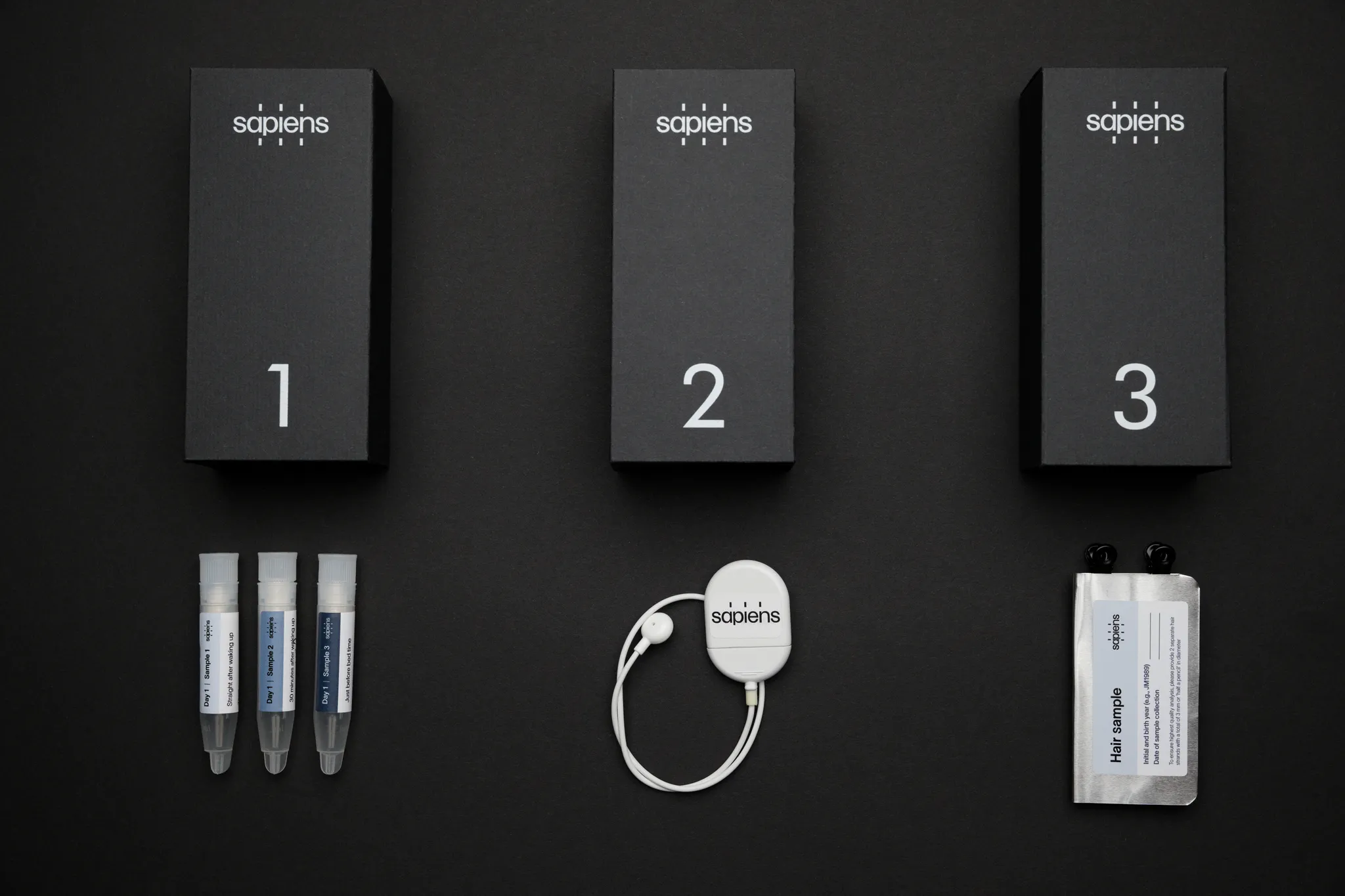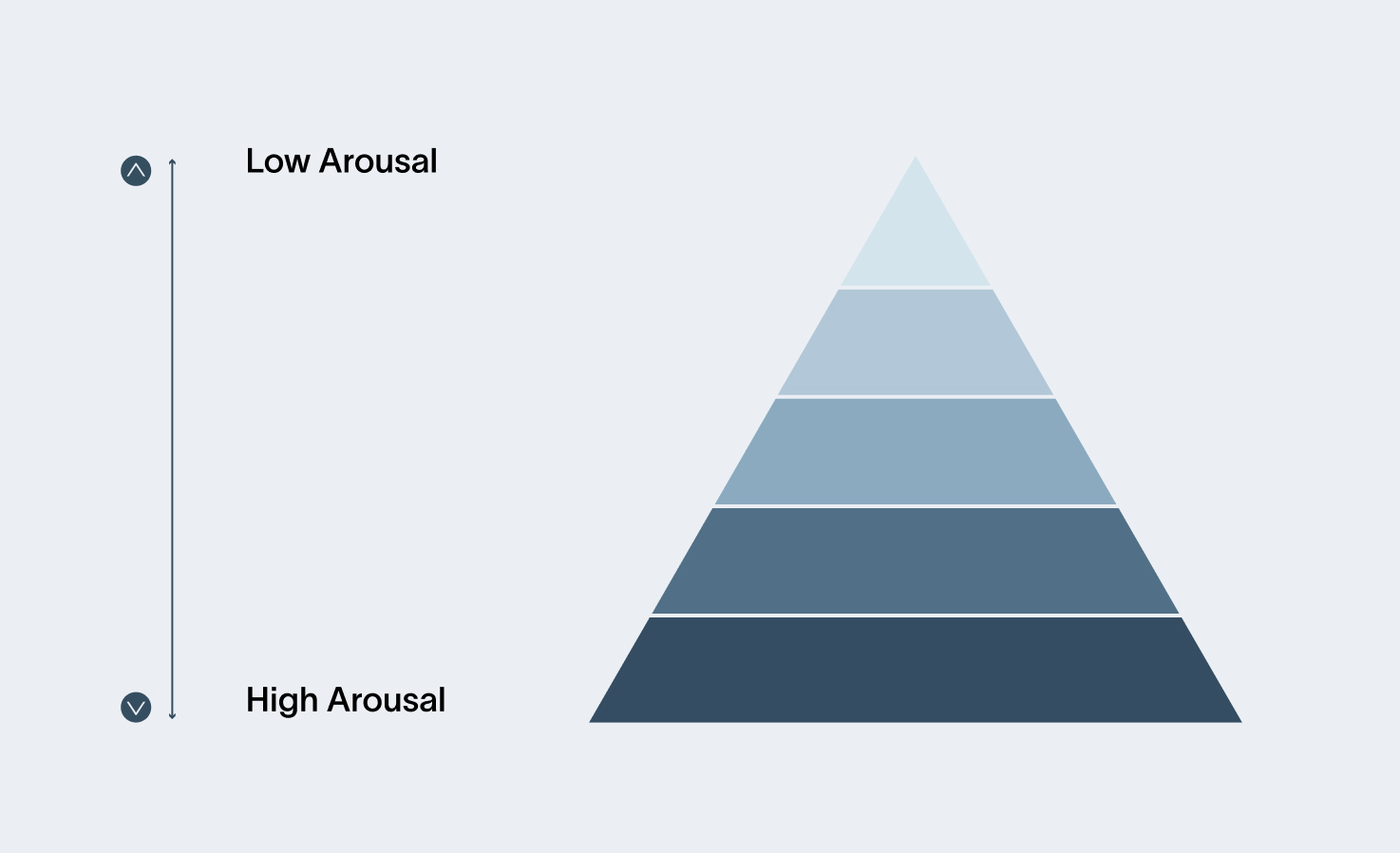Hair Cortisol: A Long-Term Stress Marker for High-Performing Professionals
Chronic stress is a pervasive factor in modern professional life, influencing cognitive performance, physiological resilience, and long-term health outcomes. While acute stress responses are necessary for peak performance, sustained dysregulation of the body's stress system blunts health and performance (Chrousos, 2009). To accurately assess and manage these risks, it is essential to track stress biomarkers that provide a comprehensive, long-term perspective, rather than just momentary snapshots of physiological states.
The Science Behind Hair Cortisol as a Long-Term Stress Marker
Hair Cortisol - The ‘HbA1c’ of Stress Measurement
HbA1c is a biomarker used in diabetes management to reflect average blood sugar levels over the past two to three months, providing a more reliable assessment of glucose regulation than single blood sugar measurements.
Similarly, hair cortisol offers insights into retrospective stress levels over weeks or months, capturing cumulative exposure rather than transient fluctuations seen in saliva, blood, or urine tests (Raul et al., 2004).
Why We need Long-Term Cortisol Measurements
Cortisol is the primary effector hormone of the hypothalamic-pituitary-adrenal (HPA) axis, influencing nearly every nucleated cell in the body.
It plays a key role in metabolism, immune function and stress adaptation (Kirschbaum, 2024). Given its widespread effects, it’s not surprising that dysregulation in cortisol levels is associated with various conditions, including cardiovascular disease, osteoporosis, sleep apnea, and mental health disorders (Chrousos, 2009). Low cortisol levels have even been reported to be the single most important biomarker for long COVID (Klein, 2023).
Traditional cortisol measurements from saliva, blood, or urine provide snapshots, reflecting stress levels over minutes to hours. These measures are highly sensitive to fluctuations due to factors like sleep-wake cycles, food intake, exercise, and acute stressors, making them unreliable indicators of long-term HPA axis activity (Kirschbaum, 2024).
In contrast, hair cortisol offers an integrated, retrospective measure of systemic cortisol levels over an extended period of time (Davenport et al., 2006; Manenschijn et al., 2011).
Hair as an Endocrine History Book
Human scalp hair grows at an average rate of approximately 1 cm per month. As hair forms, cortisol and other hormones are incorporated into the hair matrix by passive diffusion from the bloodstream.
Studies have shown, that hair cortisol levels correlate well with physiological levels and provide useful prognostic information (Davenport et al., 2006; Rakotoniaina et al., 2017). By analyzing consecutive, scalp proximal hair segments, researchers can reconstruct an individual’s stress history, much like reading rings in a tree trunk.
This perspective is invaluable for detecting prolonged elevated or suppressed cortisol levels, which might not be evident from snapshot measurements.
For instance, retrospective analysis of hair cortisol has been used to assess stress levels before major health events, such as myocardial infarctions, demonstrating its predictive value for serious health risks (Pereg et al., 2011).
Key Advantages of Hair Cortisol Analysis
- Long-Term Integration – Hair cortisol reflects cumulative hormone exposure over weeks or months, overcoming the variability of saliva, blood, or urine measurements (Stalder & Kirschbaum, 2012).
- Non-Invasiveness and Convenience – Hair samples can be conveniently collected, transported, and stored without the need for refrigeration or immediate processing (Kirschbaum, 2024).
- Retrospective Insights – The ability to analyze specific hair segments allows for stress pattern analysis over time, providing unique insight into past stress exposure (Rakotoniaina et al., 2017).
- Enhanced Reliability – Unlike momentary cortisol spikes seen in saliva or blood, hair cortisol provides a more stable and reliable measure of chronic stress (Stalder et al., 2017).
How we Use Hair Cortisol at Sapiens
Hair Cortisol is a good marker of strain (high cortisol) as well as fatigue (low hair cortisol). Based on the allostatic load model, fatigue often is a result of long-term chronic stress exposure.
For the Sapiens diagnostics we are triangulating hair cortisol with further stress-related hair hormones (Cortisone, DHEA, Testosterone), as well as hair endocannabinoids as resilience factors. Also, we are always taking daily cortisol profiles (2-3 days with multiple time points of saliva analysis on each day) to also understand the circadian rhythm of cortisol expression.
We are comparing hair and saliva stress hormones and resilience factors to reference data from large scientific studies to identify typical patterns in your age group and biological sex.
Lastly, we are interpreting these biological stress hormone results with scientifically validated questionnaires of perceived stress and fatigue.
Based on all these data points, a medical doctor or expert in out team, has a 60 minute conversation to interpret the data together with you and create a personalized protocol to reduce long-term strain or fatigue.


Advancing Precision in Stress Diagnostics
Harnessing Insights about Chronic Stress for Sustainable Performance
In high-performance professions, the ability to sustain cognitive and physiological resilience is critical for long-term success.
By understanding long-term stress exposure, executives and high-performing teams can make data-driven decisions to optimize resilience, recovery, and overall well-being.
By incorporating hair cortisol as a validated biomarker of chronic stress exposure, Sapiens offers an evidence-based approach to assessing well-being and professional endurance.
The integration of long-term stress monitoring into our diagnostics provides individuals and organizations with a strategic advantage, with the potential to enhance decision-making, recovery, and sustainable performance outcomes.
References
- Brossaud, J., Charret, L., De Angeli, D., et al. (2021). Hair cortisol and cortisone measurements for the diagnosis of overt and mild Cushing’s syndrome. European Journal of Endocrinology, 184(3), 445–454. https://doi.org/10.1530/EJE-20-1127
- Chrousos, G. P. (2009). Stress and disorders of the stress system. Nature Reviews Endocrinology, 5(7), 374–381. https://doi.org/10.1038/nrendo.2009.106
- Davenport, M. D., Tiefenbacher, S., Lutz, C. K., et al. (2006). Analysis of endogenous cortisol concentrations in the hair of rhesus macaques. General and Comparative Endocrinology, 147(3), 255–261. https://doi.org/10.1016/j.ygcen.2006.01.005
- Gao, W., Stalder, T., Foley, P., et al. (2013). Quantitative analysis of steroid hormones in human hair using a column-switching LC–APCI–MS/MS assay. Journal of Chromatography B, 928, 1–8. https://doi.org/10.1016/j.jchromb.2013.03.008
- Kirschbaum, C. (2024). What is hair cortisol analysis and how can it aid endocrinologists? Expert Review of Endocrinology & Metabolism, 19(6), 467-468.https://doi.org/10.1080/17446651.2024.2365786
- Klein, J., Wood, J., Jaycox, J., et al. (2023). Distinguishing features of long COVID identified through immune profiling. Nature, 623(7985), 139–148. https://doi.org/10.1038/s41586-023-06651-y
- Manenschijn, L., Koper, J. W., Lamberts, S. W. J., et al. (2011). Evaluation of a method to measure long-term cortisol levels. Steroids, 76(10–11), 1032–1036. https://doi.org/10.1016/j.steroids.2011.04.005
- Pereg, D., Gow, R., Mosser, M., et al. (2011). Hair cortisol and the risk for acute myocardial infarction in adult men. Stress, 14(1), 73–81. https://doi.org/10.3109/10253890.2010.511352
- Rakotoniaina, J., Kappeler, P. M., Kaesler, E., et al. (2017). Hair cortisol concentrations correlate negatively with survival in a wild primate population. *BMC Ecology, 17(1),* 30. https://doi.org/10.1186/s12898-017-0140-1
- Raul, J. S., Cirimele, V., Ludes, B., et al. (2004). Detection of physiological concentrations of cortisol and cortisone in human hair. *Clinical Biochemistry, 37(12),* 1105–1111. https://doi.org/10.1016/j.clinbiochem.2004.02.010
- Stalder, T., & Kirschbaum, C. (2012). Analysis of cortisol in hair - state of the art and future directions. *Brain, Behavior, and Immunity, 26(7),* 1019–1029. https://doi.org/10.1016/j.bbi.2012.02.002
- Stalder, T., Steudte-Schmiedgen, S., Alexander, N., et al. (2017). Stress-related and basic determinants of hair cortisol in humans: a meta-analysis. *Psychoneuroendocrinology, 77,* 261–274. https://doi.org/10.1016/j.psyneuen.2016.12.017
- Wennig, R. (2000). Potential problems with the interpretation of hair analysis results. *Forensic Science International, 107(1–3),* 5–12. [https://doi.org/10.1016/S0379-0738(99)00146-2](https://doi.org/10.1016/S0379-0738(99)00146-2)
- Wester, V. L., Reincke, M., Koper, J. W., et al. (2017). Scalp hair cortisol for diagnosis of Cushing’s syndrome. *European Journal of Endocrinology, 176(6),* 695–703. https://doi.org/10.1530/EJE-16-0873


.jpg)
.jpg)




.jpg)
.png)
.jpg)
.png)
.png)















.jpg)